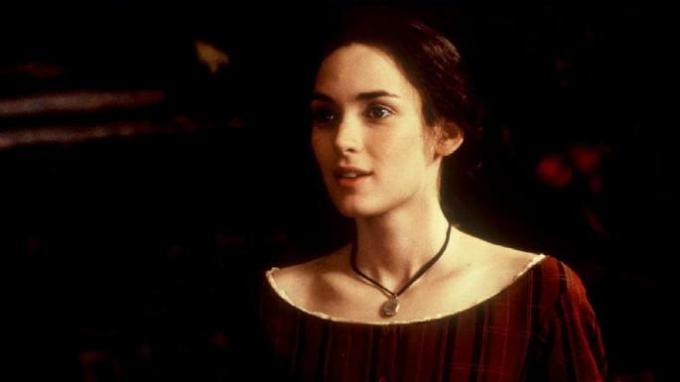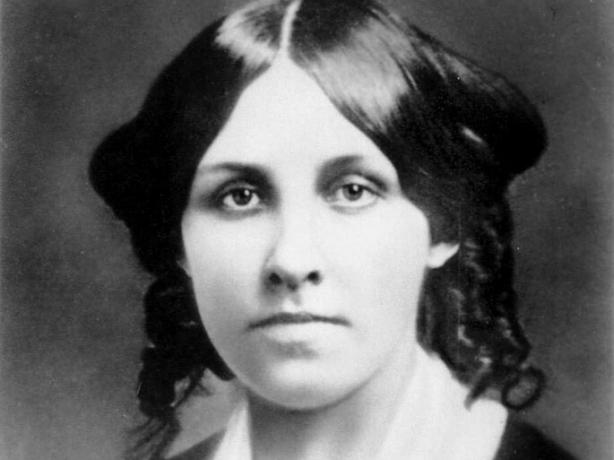Book Little Women, by Louisa May Alcott: summary, analysis and characters
Little women is a novel written by the American author Louisa May Alcott. The story focuses on the lives of four teenage sisters with very different personalities who, despite difficulties, try to overcome themselves in the context of the Civil War.
After the success of the first part, published in 1868, the author wrote a second part under the title Those Little Women (1869). Later both parts were published together.
The novel arises as a commission from the editor to Louisa May Alcott and collects experiences from the childhood of the own author, giving rise to a book that is far from the novels for adolescents written in her weather. Its originality has made it overcome the barrier of the passage of time, but what does it have? What can we highlight about her in the present?
Let's see, next, the summary and analysis of one of the great American novels.
Little Women Summary
A different Christmas
In the town of Concord (Massachusetts), during the days before Christmas, the four daughters of the March family regret not having gifts. Meg, Jo, Beth and Amy miss their father, Mr. March, who is serving in the army during the Civil War. The girls live with their mother, Marmee, in a humble home, although they all make up for their financial shortcomings with the affection and love they profess for each other.
In search of a better version
One day, the sisters receive a letter from their father. Mr. March asks his daughters to be nice to his mother.
The girls then decide to start a game based on the play The Pilgrim's Progress, with which they set out to change some imperfection in their character: Meg promises to be less vain; Jo wants to be less rough; Beth less shy and Amy less selfish. Every day the girls read a passage from this book and try to fulfill the precepts they learn from it.
One of his kind gestures is to sacrifice his Christmas breakfast to the Hummels, a neighboring family mired in poverty.
A new friendship
On New Year's Eve Meg and Jo attend an event at the house of the Gardiners, a family of wealthy neighbors. There Jo meets Theodore Laurence (Laurie), the grandson of James Laurence, a good friend of Marmee's. During the party, young people become great friends.
After the vacation period, the sisters return unmotivated to their respective jobs to help the family financially. Meanwhile, the friendship between Laurie and the sisters grows.
Meg and Jo make plans with Laurie and Amy is upset that she was not invited. She then takes a vengeful attitude towards her sister Jo hers and burns the stories she was writing. On another occasion, Jo and Laurie go skating, Amy decides to follow them and has an accident on the ice where she almost lost her life. This fact makes Jo forgive her sister for what happened.
Balance between work and free time
In the summer, the sisters enjoy their vacations and decide to do an experiment that consists of doing nothing for a week. From this they learn that it is important to balance work and pleasure time.
Dreams of the future
In September, during a picnic, the sisters accompanied by Laurie describe her dreams for the future: Laurie affirms that she wants to be a musician; Meg dreams of being surrounded by luxury; Jo wants to be a writer; Amy wants to be a recognized artist and Beth wants to stay in her home.
Hard times
In winter the sisters receive the news that their father is very ill. Soon, Beth is also ill with scarlet fever.
After a tough few months, Christmas brings good news. Mr. March returns home and notices the changes in his daughters, all of them have managed to improve themselves and achieve the goals they set for themselves. Beth recovers and Mr. Brooke, Laurie's tutor, wants to get engaged to Meg.
Three years later
The second part of the novel starts three years later, when Mr. March already lives in his home with his family. Meg prepares her wedding to John and they soon get married. Although at first life together is not as expected, as they have different disagreements, finally the couple expands the family with the arrival of twins nicknamed Daisy and Demi.
For her part, Jo is dedicated to writing and she spends much of her time locked up, with the money she earns she contributes financially to her home. She soon begins to write tabloid narratives, despite her family's discrepancies on the matter.
Amy's journey and Beth's change
Amy advances her desire to be an artist and tries it in different ways. Soon, the girl travels with her Aunt Carrol to Europe, this causes Jo's anger, as she is not the one chosen by her aunt for her journey. During her adventure, Amy writes letters to her family. There she also spends time with Fred, whom she promises to meet in Rome.
Marmee and Jo perceive that Beth is very changed and for a moment they suspect that she may be in love with Laurie. Although he has shown his feelings for Jo on several occasions.
New York experience
Jo is determined to spend time in New York as a governess. There she is dedicated to writing sensational stories, she also meets Mr. Bhaer, a German teacher.
Upon her return, Laurie confesses her love to Jo, but she does not reciprocate and the young man is upset. Afterward, Jo and Beth take a trip together to the beach. Beth tells her sister that she has little time to live and makes her promise that she will comfort her parents.
Beth's secret
In her home, the March family does everything they can to keep Beth happy for the time she has left to live. Jo accepts her sister's request to take her place in her home when she is away and she puts aside her desire to be a writer.
In spring, Beth dies. Over time, Jo feels tired of her life taking care of the home and, at her mother's request, she takes up her writing.
The unexpected commitments
Laurie and Amy spend more and more time together and end up engaged. Soon, Jo is reunited with Mr. Bhaer, who declares his love for her.
Family and happiness
In the end, Aunt March passes away and leaves a great house to Jo as her inheritance. The girl decides to turn the place into a school for orphaned children.
Five years later, the family reunites in Plumfield to celebrate Marmee's birthday. There the sisters talk about whether they have fulfilled their dreams. Although none of them is as they imagined, they are all happy because they have the love of their loved ones.
Analysis
Little women it is still a reflection of the social, cultural and historical situation of its time. On the other hand, there are features in it that differentiated it from other novels of a moralistic nature published at that time, also aimed at a mainly female adolescent audience.
Unlike others, the construction of the characters in Little women it is much less flat and unidirectional, the personality of the sisters is deeper and more transcendental.
Looking at the work with the eyes of this time, we can reflect on issues such as the role of women, through the character of Jo, and other present themes such as love, kindness, effort and work, values that the work transmits, taking into account the context in which it is wrote.
Historic context
The novel Little women It is framed in the context of the Civil War that took place in the United States between 1861 and 1865.
The experiences of the March family, to a large extent, permeated American homes whose readers went through a very similar situation. The women and children said goodbye to the men, not knowing if they would see them again. In this context, many women took the economic reins of their home, something that did not happen frequently.
In these years the feminist movement was reinforced in North America, which had great influence on the author Louisa May Alcott.
The role of women: family duty vs personal fulfillment
The novel reflects what was the role of women in the nineteenth century: take responsibility for her home and take care of housework. The daughters were expected to be trained in such tasks for their future homes. So where is personal fulfillment?
To some extent, the author dared to challenge this feminine ideal through the March sisters, who, Despite having to conform to what the time intended for their genre, they show their small revolutions. All of them want to be independent, they work to contribute to the family economy. They have aspirations that go beyond marriage and home. This is seen especially in Amy, who wishes to be an artist, and much more in Jo, who does not want to marry and dreams of living independently as a writer.
However, the characters of Meg and Beth conform to what society expects of them. While the former wishes to marry and start a family, the latter remains in the family home with a serving role.
It is evident that the author does not intend to explicitly rebel against the traditional roles of her time. But, did it open a door to reflection on whether the freedom and personal fulfillment of women could also be a way of life?
Female archetypes: Jo as a reference

In the novel four characters can be glimpsed representing different archetypes. In Meg the values and aspirations assigned to the woman of the time are represented, in some way, the “traditional” woman. In Beth you see innocence and generosity. In Amy, vanity and selfishness. Jo's character breaks schemes by being rebellious and manifesting her desire for independence from her.
Simone de Beauvoir herself claimed to have identified with Jo. The creation of this character is directly related to the real life of the author, it is her alter ego, and she became a reference for readers, especially for those who did not feel they fit in with the established ideals of femininity.
Jo wants to be independent, work, and contribute financially to her home. She also states that she wishes she had contributed to the front, as did her father.
Although it is true that, at the end of the novel, Jo ends up giving up her dreams and married her, the girl has managed to combine the marriage with her own independence and contributes financially to her household by working in the orphanage that she herself has created.
In a way, Jo's character could be giving a hopeful message about the existence of another more "independent" way of life for women of the time, although today it is perceived as something normal.
In addition to the female role, there are other themes present in Louisa May Alcott's work that are related to the way in which women are educated. sisters, a pedagogy that focuses more on spiritual rather than materialistic fulfillment through values such as love, kindness and effort. All of them are instilled by her mother, who became her family axis when her husband went to war.
Romantic and family love
Love is present in the book in two ways. On the one hand, romantic love and, on the other, family love.
In the first part of the work, love is idealized, typical of the romantic era in which the book is framed. Later, with the maturity shown by the sisters in the second installment, a more complex idea of love is perceived.
In the end, the novel concludes with the idea that the most unconditional love is the family one, since the sisters always remain there for each other. Thus, family love is the one that gives the greatest happiness.
Kindness and modesty
At the beginning of the novel the allegorical novel is presented The Pilgrim's Progress by John Bunyan, which is present in several chapters. This book serves the girls as a moral transformation to overcome their imperfections, the young women are educated in the way of kindness and modesty. This excerpt Mrs. March warns Amy about it:
Vanity spoils the best qualities. Talent and kindness never go unnoticed, and even if they do, the awareness of having them and making good use of them should suffice. The virtues are extolled by modesty.
Work and effort
The novel reflects how the March family had gone from having money to not having it. When the father of the family, then the axis of the home, goes to war, Mrs. March is in charge of her home in all aspects, including the education of her daughters.
This seemingly adverse occasion allows the women of this household to break out of traditional female roles. In one way or another, each of them learns to do jobs outside the family home in order to support the family.
Main characters
- Margaret (Meg): older sister of the sisters. She is 16 years old, she is a vain girl and her character often clashes with Jo. In the second part she marries John Brooke and has two children.
- Josephine (Jo): the second of the March sisters. She is 15 years old and her dream is to become a writer. She hates to follow the female prototype of the time. Her best friend is Laurie, who is in love with her.
- Elisabeth (Beth): the third of the sisters. She is 13 years old, she has great taste in music and loves to play the piano. She falls ill with scarlet fever and passes away.
- Amy: she is the youngest of the sisters. He is 12 years old and loves art. She is interested and wants to marry someone wealthy to have a life full of luxury. They end up marrying Laurie.
- Mrs. Margaret March (Marmee): she is the mother of girls. He takes care of them when her husband walks in front of her.
- Mr. Robert March: he is the girls' father and Marmee's husband. She used to have a wealthy life but she was ruined.
- Theodore Lawrence (Laurie): he is the grandson of Mr. Laurence. He is very friends with the girls, especially Jo. In the second part he is rejected by Jo, but eventually marries Amy.
- Mr. Laurence: Laurie's grandfather. He is the girls' affluent neighbor and friend of Mrs. March.
- Hannah Mullet: she is the woman in charge of the March household chores. She is a loyal woman who is practically another member of the family.
- Hummel family: It is a German family that lives near the Marches. Marmee and her daughters help them since they don't have many financial resources.
- Mr. Brooke (John Brooke): he is Laurie's tutor and ends up in love with Meg, whom he marries.
- Vuaghn family: It is a wealthy family whose children are friends with Laurie. Kate, Fred, Frank and Grace are the members. Eventually Fred proposes to Amy.
Louisa may alcott

Louisa May Alcott was born in 1832 in the United States into a family with limited economic resources. This fact made the author have to start working at a very young age to contribute to the family economy. For this reason, she began to write in different newspapers, something similar to what happened with the character of Jo in Little women.
She began writing short stories from a very young age, although recognition of her came with the publication of Little women in 1868.
Louisa May Alcott was very active in the abolitionist and suffrage movement.


